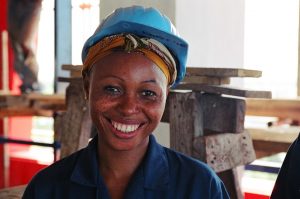What's next? Lessons on Education Recovery: Findings from a Survey of Ministries of Education amid the COVID-19 Pandemic
Inglés
Organizaciones internacionales
Recopilamos información proveniente de otras organizaciones internacionales que promueven el desarrollo de competencias y la transición de la educación y la formación al trabajo. El Grupo de Trabajo Interinstitucional sobre Educación y Formación Técnica y Profesional (IAG-TVET, por sus siglas en inglés) se estableció en 2009 con objeto de intercambiar resultados de investigación, coordinar actividades conjuntas de investigación y mejorar la colaboración entre las organizaciones que trabajan en los ámbitos nacional e internacional.

Calidad y pertinencia de la formación

Trabajos de investigación y síntesis
Documentos de trabajo, informes y otras publicaciones de organizaciones internacionales, instituciones académicas y organismos bilaterales. Resultados de investigación para estimular un debate bien fundamentado sobre las competencias, el empleo y la productividad.

Findings from a Survey of Ministries of Education amid the COVID-19 Pandemic
United Nations Educational, Scientific and Cultural Organization (UNESCO), the United Nations Children’s Fund (UNICEF), the World Bank and the Organisation for Economic Co-operation and Development (OECD) have collaborated in the third round of the Survey on National Education Responses to COVID-19 School Closures, administered by the UNESCO Institute for Statistics (UIS) and OECD to Ministry of Education officials. The questions covered four levels of education: preprimary, primary, lower secondary and upper secondary. While the first two rounds of the survey were implemented during the periods May–June and July–October 2020, respectively, the third round was implemented during the period February–June 2021. In total, 143 countries responded to the questionnaire. Thirty-one countries submitted responses to the OECD (“OECD survey”) and 112 countries responded to the UIS (“UIS survey”). Seven countries responded to both surveys. In these instances, the more complete set responses were used in analysis.